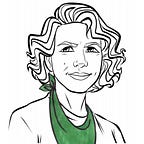Frontline organizers and the knowledge commons: Kicking Off Season 2 of Open Climate Calls
To kick off season 2 of Open Climate calls (see Season 1 here) we invited Matt Rota, Senior Policy Director for Healthy Gulf. The goal of this call was to explore the question: how are environmental defenders using the knowledge commons? This is the first call on the topic, but expect more to come!
Matt is based in New Orleans, Louisiana. As he described in the call, Louisiana is “ground zero for climate-related issues in the US, and there are a lot of environmental justice problems due to systemic racism, among other things”. Healthy Gulf has been working in the area since 1994, focusing on a just transition, since the five states adjacent to the Gulf of Mexico — Texas, Louisiana, Mississippi, Alabama, Florida — are rife with climate and environmental justice issues.
In his presentation, Matt shared some examples of the types of problems they experienced in the region over the past years, particularly with oil and gas companies. Matt stressed the importance of organizations in helping environmental defenders (such as Skytruth) do their own environmental monitoring since neither government nor companies are being particularly transparent about the environmental impacts of their activities.
In this context, for Matt, “data, and accessible data, is very important for frontline defenders. If the data is not available, then it is a lot harder to make any case.” He went on to describe some of the challenges his organization faced when trying to bring a case against a coal export facility in Plaquemines Parish (This article contains more information about the lawsuit).
The lawsuit was based upon the context of a proposed new facility. As Matt described, “the first thing we did was go to Google Earth to generate the maps and the timeframe on the platform. That’s how we realized that, for years, there was a petroleum coke dust plume floating down the river, and getting into coastal restoration projects”. Using this information, the organization started preparing a lawsuit against them.
Matt continues: “as we were putting the lawsuit together, we needed to use some of these satellite images. I don’t know if you’ve tried, but it’s hard to get data from Google.” As Matt described, even if Google Earth makes some of their data sources available, most of it is proprietary. Due to this, his organization had to collect all the data again to bring the lawsuit, using sometimes precarious elements such as a canoe, a kite and a balloon with a camera that took photos over the facility.
Additionally, Matt stressed how sometimes despite using good data collection methods, they might still not be successful in having their data accepted by authorities. Matt shared a second project, consisting of a scorecard they developed to grade how the different states in the surrounding area of the Gulf of Mexico are accepting the data generated by environmental organizations and citizen data projects. Often, most states won’t accept the data generated by these groups even if they use good quality assurance protocols or EPA guidelines.
And, most important, having the data available does not necessarily mean it is easy to understand by the public (or even regulators), or timely. One of the examples that Matt shared was the work of Forensic Architecture in Cancer Alley — an area of the Mississippi River in Louisiana lined with petrochemical facilities. They used different data sources to create a map that shows where the pollution is going according to the wind. As Matt said, “By the time the environmental agency comes out, it’s too late: folks can’t identify why folks were having respiratory issues. [But] the visualization of environmental data can have a great impact.”
“The more info we have, and the more info the communities have, in a format that they can understand and then share with other decision makers is really a vital piece of the whole movement of environmental justice & climate justice in the world.”
Matt’s final point was that data also needs to be persistent across time. His example was with permits to destroy wetlands, dependent on the US Corp of Engineers. A Healthy Gulf volunteer created a scrapper to understand how many permits and acres were being issued, but after a while the US Corp of Engineers changed their website, making the scrapper unusable and the project had to start all over again to retrieve the information.
With all these great examples, we went to breakout rooms. Our discussion was guided by these four questions:
- How can the open movement help the Environment and Just Transition movements?
- What are some strategies to get governmental agencies to accept community and citizen data?
- What could be done to make environmental data more open & accessible? (i.e., from policy, regulatory, community, or technical perspectives)
- How can we best communicate synthesized data from open and governmental sources to the communities impacted by pollution?
There were interesting ideas workshopped in those breakout rooms, including creating enabling regulatory environments that accept these data collection methods, “not having data living in PDFs” and involving students and libraries to help with data collection, visualization and dissemination.
